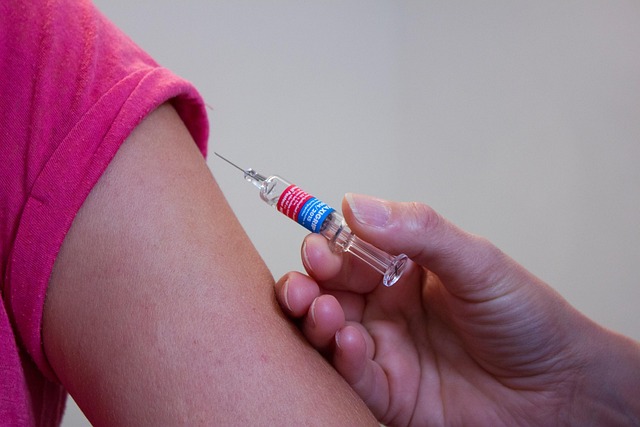Lung Disease Treatment: Approaches for Care and Management
Lung diseases cover a wide range of conditions affecting breathing and oxygen delivery, from infections and asthma to chronic obstructive pulmonary disease and interstitial lung disorders. Treatment aims to relieve symptoms, slow progression, and improve quality of life through a mix of medicine, therapies, and lifestyle adjustments. Understanding common approaches helps patients and caregivers make informed decisions with their healthcare team.

This article is for informational purposes only and should not be considered medical advice. Please consult a qualified healthcare professional for personalized guidance and treatment.
What affects the lungs?
Lung health can be altered by infections, environmental exposures, genetics, and lifestyle factors such as smoking. Acute illnesses like pneumonia and long-term conditions like COPD or pulmonary fibrosis affect the lungs differently, requiring tailored assessment. Symptoms that suggest lung involvement include persistent cough, shortness of breath, wheeze, and reduced exercise tolerance. Early assessment by a clinician can identify reversible causes and begin appropriate management to protect lung function.
The environment and workplace exposures also play a role in lung disease. Air pollution, occupational dust, fumes, and secondhand smoke contribute to chronic inflammation and scarring in the lungs. Identifying and reducing exposure is part of preventive medicine and ongoing disease control. Vaccinations against influenza and pneumococcus, when appropriate, can reduce the risk of severe infections that may further damage the lungs.
How is lung disease diagnosed?
Diagnosis typically starts with a detailed history and physical exam and progresses to tests targeted to lung structure and function. Common investigations include chest X-rays, CT scans, spirometry to measure airflow, and diffusion capacity tests to evaluate gas exchange. Blood tests, sputum cultures, and bronchoscopy are used when infection or specific causes are suspected. Accurate diagnosis guides choices about medicine, rehabilitation, and potential referral to specialists.
Pulmonary specialists often work with radiologists and pathologists for complex cases. For some interstitial lung diseases, a tissue biopsy may be needed to determine the precise subtype. Pulmonary function testing can be repeated over time to monitor disease progression or response to treatment, informing adjustments in ongoing care plans.
What treatment options exist for lung conditions?
Treatment approaches vary by disease but generally include symptom control, slowing disease progression, and preventing complications. For obstructive conditions like asthma and COPD, inhaled bronchodilators and corticosteroids are foundational to reduce airway inflammation and improve breathing. Infections receive targeted antibiotics or antivirals as indicated. For some chronic lung diseases, oxygen therapy and pulmonary rehabilitation are important adjuncts to medicine to improve exercise tolerance and daily function.
Surgical and interventional treatments can be options in select cases: lung volume reduction for emphysema, bronchoscopic interventions for severe airway obstruction, or lung transplantation for advanced, refractory disease. Nonpharmacologic measures such as smoking cessation, nutritional support, and vaccination are essential components of any comprehensive treatment plan and frequently increase the effectiveness of medical therapies.
What role does medicine play in management?
Medicine is central to controlling inflammation, preventing exacerbations, and managing symptoms. Inhaled medications, oral drugs, and biologic agents target different pathways in lung disease. For example, long-acting bronchodilators relax airway muscles, inhaled corticosteroids reduce airway inflammation, and newer targeted biologic medicines can modify immune-driven asthma. Medication regimens are individualized based on disease severity, comorbidities, and response to therapy.
Proper medication use includes correct inhaler technique, adherence to prescribed doses, and regular review by healthcare providers to minimize side effects and optimize benefit. Pharmacists and nurses can support medicine education and monitoring. In chronic diseases, periodic reassessment helps determine whether doses should be stepped up or down according to symptom control and test results.
How to find healthcare and local services for lungs?
Coordinated healthcare often involves primary care providers, pulmonologists, respiratory therapists, and rehabilitation services. Local services may include pulmonary rehabilitation programs, smoking cessation clinics, home oxygen suppliers, and support groups for chronic lung disease. Accessing these services usually starts with a referral from a primary care clinician or a specialist evaluation that outlines needed therapies and community resources.
When seeking care in your area, consider clinics affiliated with academic medical centers or hospitals that offer multidisciplinary lung disease programs. Many regions have specialized centers for interstitial lung disease or COPD that provide comprehensive assessment, clinical trials, and advanced therapies. Telemedicine options are increasingly available for follow-up care and can improve access to respiratory specialists for people living at a distance.
Conclusion
Lung disease treatment combines accurate diagnosis, targeted medicine, rehabilitation, and environmental or lifestyle interventions to manage symptoms and slow progression. Coordination between patients and a multidisciplinary healthcare team supports tailored treatment plans and monitoring. Regular reassessment and attention to preventive measures—such as vaccinations and exposure reduction—help maintain lung function and quality of life across the spectrum of lung conditions.






